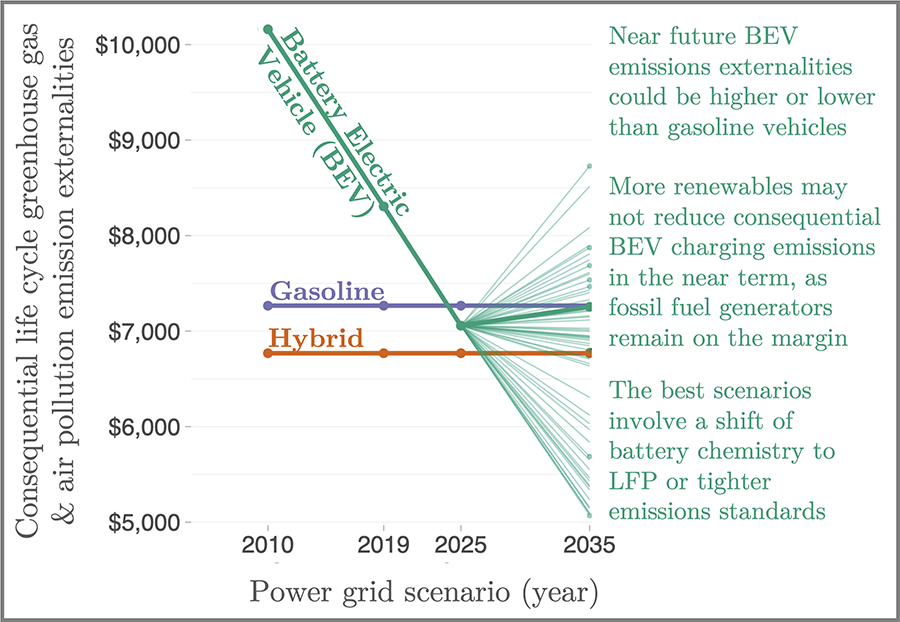Shifting gears in the transition to electric vehicles
Electric vehicle emissions costs are anticpated to continue to decline through 2025, after which they could stagnate, rise, or fall, depending on key factors such as the evolution of the power grid, battery technology, and public policy.
A new Carnegie Mellon study finds that the climate change and human health costs of owning and operating a plug-in electric vehicle in coal-heavy regions of the eastern United States have dropped dramatically as coal-fired power plants that supply electricity to charge electric vehicles have been displaced by natural gas. This shift has made electric and gasoline vehicle lifetime emissions costs comparable, but the study illustrates that where they go from here will depend on a few key factors.
“People often think that growing wind and solar power are making electric vehicle charging cleaner,” says engineering and public policy and mechanical engineering professor Jeremy Michalek, the paper’s corresponding author. “In the long run, that will likely become the case, but over the next decade of fleet transition, we find that the most important factors are shifting away from nickel-based batteries and tightening standards for emissions from fossil fuel power plants and the vehicle fleet.”
Over the next decade of fleet transition, the most important factors are shifting away from nickel-based batteries and tightening standards for emissions.
Jeremy Michalek, Professor, Engineering and Public Policy, Mechanical Engineering
The study focuses on the PJM power grid region, the largest regional transmission operator in the U.S., which stretches from Chicago to Philadelphia to North Carolina, and serves 65 million people in 13 states and the District of Columbia. The mix of power sources in PJM is similar to that of North America as a whole, and as such provides a baseline for broader assessment.
The research findings anticipate the continuation of reductions in electric vehicle emissions costs through 2025, after which they could stagnate, rise, or fall, depending on key factors such as the evolution of the power grid, battery technology, and public policy.

An interactive website created by Michalek’s coauthor and CMU engineering and public policy alumnus, Matthew Bruchon, allows users to quickly compare the life cycle emissions of gasoline and electric vehicles under a range of scenarios to understand which factors matter most.
The authors find that shifting away from nickel-based batteries is one of the largest levers for reducing electric vehicle lifetime emissions over the next decade, because nickel production releases substantial sulfur dioxide emissions in some supplying countries and contributes to respiratory and cardiovascular disease. The study indicates that nickel-free battery alternatives, such as lithium iron phosphate, can reduce lifetime emissions costs.
“The other key factor is public policy,” says Michalek. “Since adding new electric vehicle charging will primarily increase fossil fuel power generation over the next decade, emissions from fossil fuel plants play a large role in determining the emissions consequences of electric vehicle adoption. Federal car and truck emissions standards are also critical to determining what overall fleet emissions will look like.”
These issues will likely be impacted by new, more stringent standards that have been proposed by the Environmental Protection Agency for both fossil fuel-fired power plants and vehicle emissions, which are currently in the process of being finalized.
